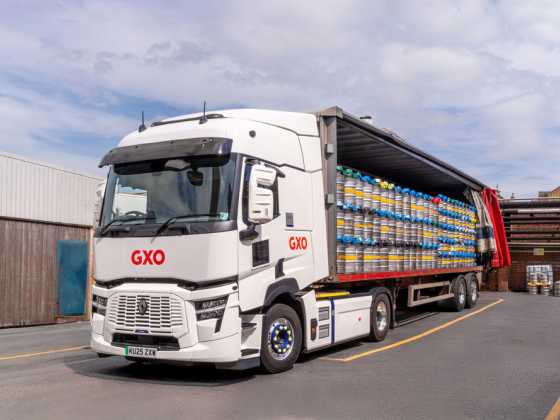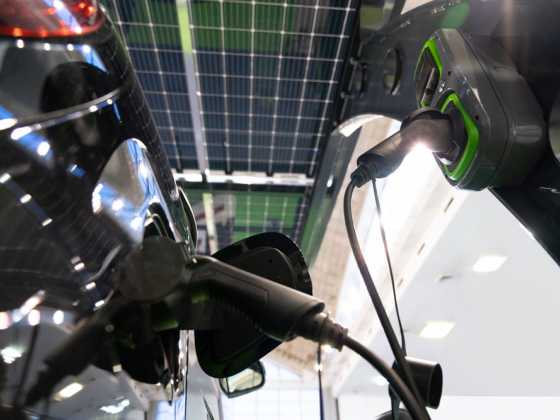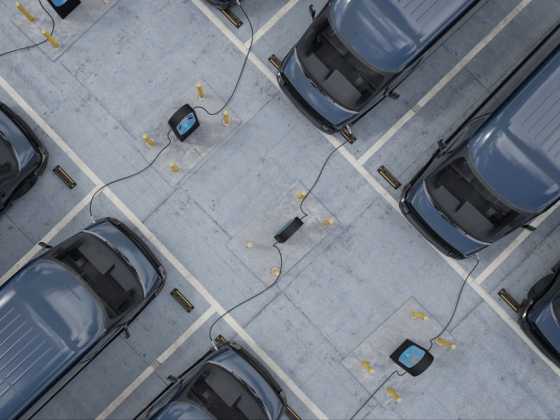How to transform last mile deliveries

Last-mile deliveries are one of the most crucial parts of a courier’s journey, and work to cut their environmental impact is gaining traction, as Robyn Quick finds.
A lot of thought and funding is put into the long process of delivering goods from long distances, but the shorter journeys are just as important.
Last mile deliveries refers to the final step of the logistics process, when goods are moved from a transportation hub to their final destination which is most often in an urban area.
There have been a variety of solutions proposed to make these last mile deliveries as carbon neutral as possible, such as using electric vans, deliveries on foot, cargo bikes and micro logistics hubs.
EIT InnoEnergy found recently that a mixed fleet of e-cargo bikes and e-vans can save urban logistics providers significant costs compared to a 100 per cent e-van fleet operation and contribute to improving overall life quality in cities.
They reported that the use of e-cargo bikes reduces the total cost per parcel compared to e-vans alone, regardless of the fleet mix and the city layout.
Using e-cargo bikes in fleets already has proven benefits. Firstly, they have a lower upfront cost compared to cars and vans, and require a lot less upkeep. They are also not very demanding on a city’s infrastructure, which is a significant plus when considering the energy savings of this.
Cargo bike sharing scheme
Cargo Bike Share was the first cargo bike rental service in the UK, and continues to operate today in London. The cargo bikes are on-street, on-demand and publicly available to businesses and residents. There are four cargo bike share hubs in Hackney with two in Shoreditch, one in Stoke Newington and another on Broadway Market. Local businesses are also provided with a free four-hour training session on how to master control skills with and without cargo.
In 2019, UK parcel delivery company DPD partnered with Oxford-based manufacturer Electric Assisted Vehicles (EAV) to introduce five e-cargo bikes in London, York and Newbury. The initial tests went well, and they doubled their fleet later that year.
IKEA has an ambition of achieving 100 per cent zero emission home deliveries by 2025, and is already achieving this in cities such as Glasgow. To aid this endeavour, IKEA is investing £4.5 million in charge points for its electric delivery vehicles.
What’s more, UPS has just opened a ‘micro hub’ in Cambridge city centre, that will allow electric assisted four-wheeled cycles to sustainably deliver packages. Micro logistics hubs Courier company Delivery Mates and Q-Park UK announced in February 2024 that they would continue to independently operate from the Pimlico micro logistics hub for a minimum of one year.
Based in the Q-Park Pimlico parking facility, the hub receives parcels from an electric van and then distributes them by electric cargo bikes in the City of Westminster and surrounding areas.
Micro logistics hubs are small, secure spaces that couriers and operators can use to receive, sort, and send deliveries in central locations, ideally by cargo bike or walking porters, to support zero-emission last-mile deliveries in the City of Westminster.
They act as a crucial step for consolidating deliveries, which can reduce the number of polluting vehicle trips and congestion, thereby improving local air quality.
After nine months of operations, the e-cargo bikes travelled total distance of more than 22.5km, which led to significant emissions reductions of more than 4,000kg of carbon dioxide, around 15,000g of nitrous oxides, and just over 300g of PM2.5 when comparing the e-cargo bikes to polluting van deliveries on the last mile.
Councillor Paul Dimoldenberg, cabinet member for city management and air quality at Westminster City Council, said: “We are immensely proud of the success of the Pimlico Micro Logistics Hub, which demonstrates the power of working together to tackle urban transport challenges.
“This project exemplifies our commitment to creating a greener, more sustainable economy while supporting local businesses and improving the quality of life for residents.
“Building on the success of the trial, Westminster City Council hopes to expand and replicate similar initiatives across the city to transform urban logistics and improve sustainability.”
The space for more hubs
As well as this, Cross River Partnership put out a call in April for available spaces in London which can be used as Urban Logistics Hubs to enable emissions free deliveries across the capital.
They asked that landlords who have some unused space consider renting it out as a logistics hub or micro site, with the aim to reduce the number of vehicle trips and congestion, to then enable deliveries to be made on an EV, by bike or on foot.
The larger logistics hubs will be accessible for electric fleets. The smaller version, known as the micro site, functions in the same way but in a smaller space, hosting cargo bikes.
There are already a variety of logistics hubs in central London.
To be considered further across the UK, operators said the ideal large-scale logistic hubs would need to include a variety of features.
They would have to feature a floor space of at least 280 metre-squared but ideally 465 to 930 metre-squared and as much headroom as possible. Operators also suggested CCTV systems to protect assets, goods and staff, EV charging points depending on the individual fleets’ requirements, and at least a five year lease period for clients.
Micro hubs would require slightly different features. For example, shorter leases with high levels of flexibility would be preferred, as well as break clauses. The 90 to 185 metre-squared floor space would be most suited for railway arches and under-utilised car parks.
Operators are still experimenting with how to lower the impact of last-mile deliveries on the environment, and e-cargo bikes, electric vans and micro logistics hubs seem to be a great start. The next challenge will be implementing these new vehicles and hubs into more rural areas across the UK.






